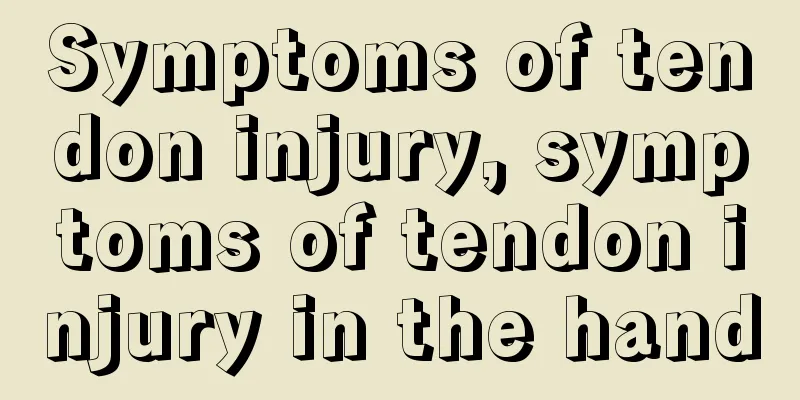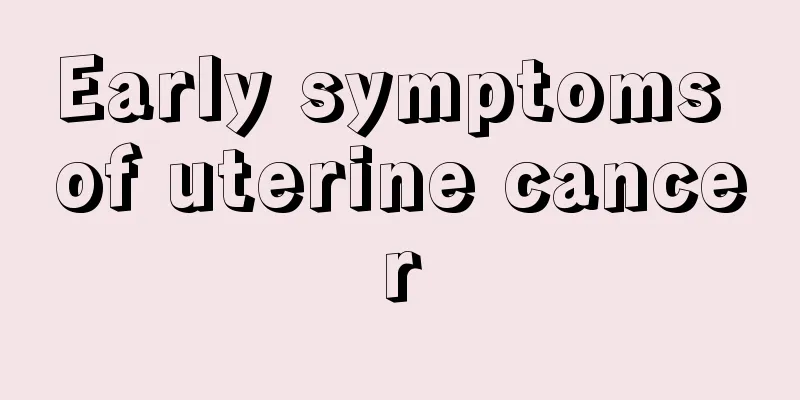Symptoms of tendon injury, symptoms of tendon injury in the hand

|
Tendon injuries are generally caused by external forces. Excessive muscle fatigue and long-term poor posture causing muscle imbalance can all lead to tendon injuries. After tendon injury, related joint movements will be impaired. Pay attention to early treatment and formulate a reasonable treatment plan. 1. Symptoms and Signs After the tendon ruptures, the corresponding joints lose their mobility. For example, if the deep flexor tendon of the digitorum is ruptured, the distal interphalangeal joint cannot flex; if both the deep and superficial flexor tendons of the digitorum are ruptured, both the distal and proximal interphalangeal joints cannot flex. When the extensor tendon is ruptured at different parts, the corresponding joint cannot be stretched and may become deformed. Sometimes the tendon is not completely ruptured, and although the joint can still move, it will be weak and painful when undergoing a resistance test. 2. Early treatment 1. Careful examination: To formulate an optimal surgical plan depends on careful examination before and during the operation, which is related to the success and effect of the operation. Such as confirming the time interval between the injury and the surgery, the area of tendon rupture, the number of ruptures, the degree of wound contamination, whether there is an unstable fracture and the degree of tissue damage around it, etc. Only then can it be determined whether the tendon should be treated early and what the treatment method should be. Usually, wounds that are less than 12 hours old, have a lesser degree of contamination, are neater incisions, and have smaller tendon defects should be sutured early and closed in the first place. The normal structure and stability of bones and wound coverage are prerequisites for early tendon repair. 2. Debridement: Early and thorough debridement is the key to directly affecting prognosis. The purpose is to remove necrotic tissue contamination and foreign matter, turning contaminated wounds into clean wounds. It can also further help understand the damage to the tendons and peritendinous tissues to facilitate the next step of treatment. Debridement is performed to reduce post-traumatic inflammatory response and avoid the accumulation of large amounts of plasma exudate in the wound, which may cause severe tendon adhesion after surgery. 3. Tendon repair: The principle of repair is no tension, no torsion, and no damage. Postoperative tendon adhesion and re-rupture are the main complications, and tendon adhesion is a difficult problem that has not yet been completely solved. |
<<: Is alcoholic liver disease contagious?
>>: What are the side effects of blocking injections? Hormone drugs should be used with caution
Recommend
Are there any side effects of photorejuvenation laser?
In the modern people's aesthetic view, facial...
What to do if women's feet suddenly smell
For many women, foot odor has a very negative imp...
Is biological patch surgery harmful to the human body?
Biological patch surgery is a commonly used metho...
How to effectively prevent hamartoma
In fact, it is very important for patients with h...
What is the best way to prevent frostbite?
I believe that when the cold winter comes, many f...
What is the treatment for bleeding teeth?
Dental bleeding is one of the most common oral di...
How to quickly remove the sticky pot
When we cook, if we are not careful, the pot will...
Which is better, loose powder or pressed powder
Loose powder and pressed cake look like similar c...
Can optic nerve ischemia be cured?
The optic nerve is a relatively important nerve i...
What to eat to grow muscles when doing bodybuilding
A body with toned muscles is a good figure that m...
How to effectively prevent liver cancer? Liver cancer prevention advocates three checks and two early warnings
Liver cancer is one of the common malignant tumor...
Can I drink oolong tea if I have skin allergies
Skin allergy is a common disease in life. It is n...
What are the common causes of white spot skin diseases
White spots appear on the skin and tend to expand...
What disease will you get if you induce vomiting frequently
Vomiting is a very common phenomenon, and now man...
How to lose weight if you have thick arms
For people who need to lose weight, no matter whi...









